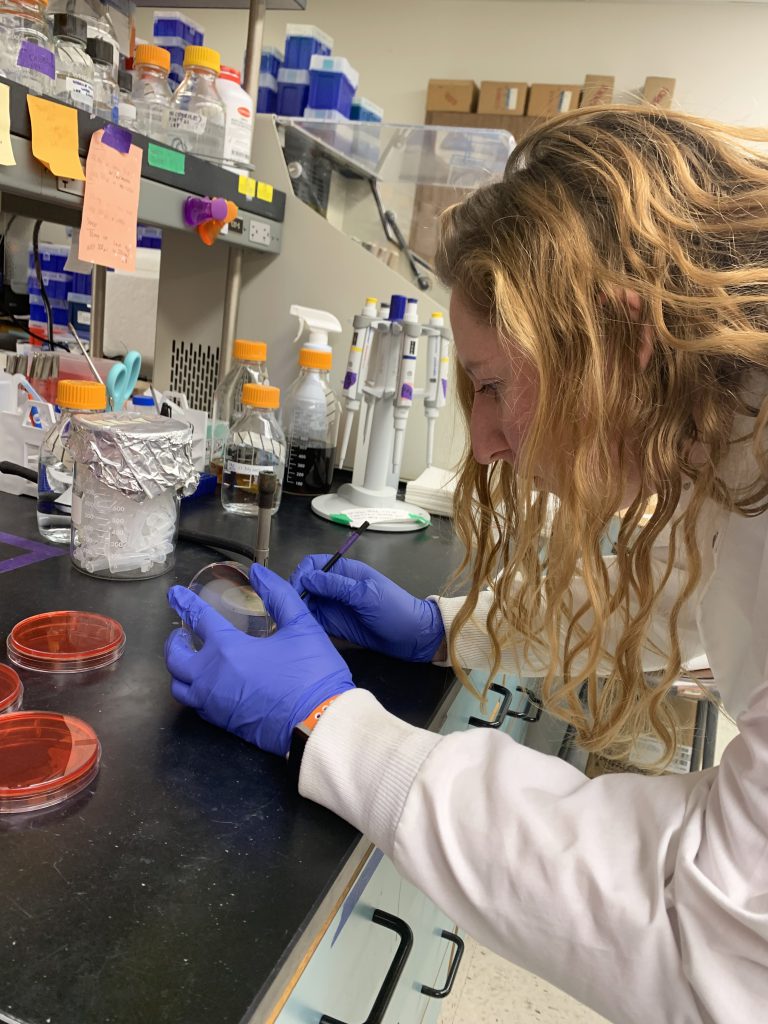• There is no FDA-approved human vaccine for nontyphoidal salmonella, the kind of salmonella spread through contaminated food and water that causes gastrointestinal illness.
• UF researchers are exploring a novel method of vaccinating against salmonella using small extracellular vesicles.
• In a new study, the scientists showed that this method enabled vaccinated mice to survive what would be a lethal salmonella infection.
There is no FDA-approved human vaccine for nontyphoidal salmonella, which kills hundreds of thousands of people and sickens an estimated 93.8 million globally each year. Nontyphoidal salmonella is the type of salmonella that causes gastrointestinal illness and is spread through contaminated food and water.
However, scientists at the University of Florida are taking an innovative approach toward one day developing such a vaccine.
In a new study, researchers used small extracellular vesicles, or sEVs, to boost immunity against salmonella in mice. This increased immunity helped the mice survive what would otherwise be a deadly infection, the study reports.
“Mice actually get a lot sicker from this strain salmonella than humans do, so the fact that our treatment allowed the mice to survive is promising,” said Mariola Edelmann, senior author of the study and an associate professor in the UF/IFAS department of microbiology and cell science.

Small extracellular vesicles are tiny packets of molecules produced by cells to communicate with other cells. Immune cells infected by bacteria or viruses produce sEVs that alert other cells to the threat.
In this study, the researchers wanted to see if giving mice sEVs produced by cells that had recently battled salmonella would inoculate mice against a future salmonella infection.
The scientists gave these sEVs to one group of mice, either orally or through a nasal spray, while another group of mice received saline. After four weeks, the researchers infected all the mice with salmonella. Only those mice that received the sEVs nasally were able to produce what scientists call memory immune responses against this bacterium, and these mice also survived.
The researchers also compared the mice that received the sEV treatment to those that were infected with and survived a weakened strained of salmonella. This weakened strain is often used to compare the efficacy of a potential salmonella vaccine. The scientists found that both the sEV-treated mice and the mice infected with the weakened strain survived the salmonella infection.
“The weakened strain is not a viable human vaccine because it’s still a live pathogen and could make you sick. However, with sEVs, we saw the same protective effects as the weakened strain but without that risk of illness,” said Lisa Emerson, first author of the study and doctoral student in the UF/IFAS College of Agricultural and Life Sciences working in Edelmann’s lab.
The researchers also discovered that mice exposed to the sEVs produced antibodies against salmonella. These antibodies allow the immune system to recognize and fight salmonella in the future. However, the researchers don’t yet know how long this “memory response” lasts beyond the four-week period used in the experiment.
Going forward, the researchers want to understand why giving the sEVs nasally, rather than orally, helped the mice build immunity against salmonella. They will also explore how to scale up the production of sEVs, a necessary step in mass-producing a vaccine.
Mass-producing sEVs could have benefits beyond preventing salmonella, Edelmann said, as sEVs could be used to deliver a vaccine to protect against other infectious diseases.
“What’s especially novel about this is approach is that we are using a tool cells already use to communicate as a way to boost immunity against a disease,” Edelmann said.
 5
5
